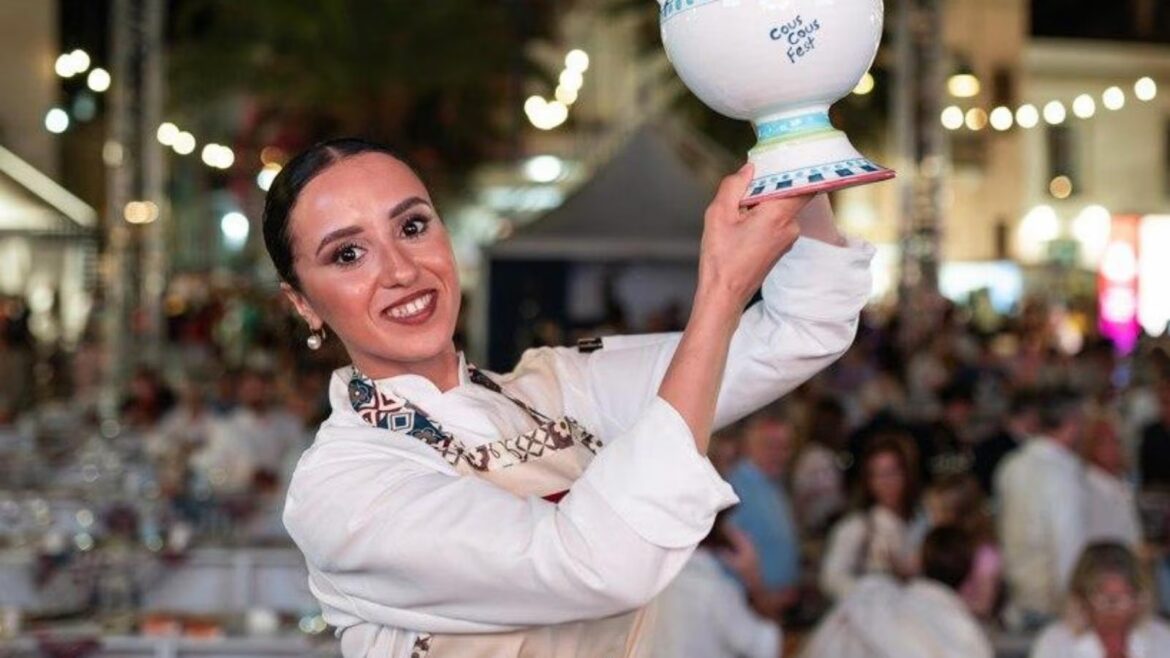Rabat – Moroccan chef Wijdane Merdad has won this year’s Cous Cous Festival in San Vito Lo Capo, Italy, after she impressed the jury with a unique recipe she calls “Mediterranean Symphony.”
The Cous Cous Fest is one of the most famous food festivals in the Mediterranean, held annually in San Vito Lo Capo, a small coastal town in Sicily. The event began in 1998, when the town decided to celebrate couscous, a simple but delicious dish widely eaten in the Maghreb, although it was still not popular in Italy at the time.
The idea was to use couscous as a symbol of dialogue, hospitality, and peace among different cultures. The motto of the festival is “Make Cous Cous Not War.”
Wijdane’s passion for couscous and cooking in general began when she was very young. Her grandmother used to prepare couscous for the whole family, inspiring her to turn this passion into a career.
After working in the kitchen of Hotel Laurin in Italy, she now prepares appetizers at Hotel Forestis, a five-star luxury hotel near the Erbe Pass above Bressanone. She works under the supervision of chef Valentina Pojer, while the hotel’s culinary direction is led by Executive Chef Roland Lamprecht.
Cous Cous is becoming more popular in Italy, but Wijdane explains that the real dish is different from what people buy in supermarkets. She prepares couscous starting from raw semolina, mixing it with argan oil and adding water slowly until she gets the perfect texture. This process can take up to an hour. The grains are then steamed a couple of times, making the finished couscous much lighter and more flavorful than packaged versions.
Her journey to the national competition began almost by accident. An Instagram post caught her eye, and she decided to give it a try. She says she never expected to win. Soon after, she joined the Italian team for the international championship, where the team won second place with a sweet cous cous made with prickly pears.
The winning recipe in Italy is also sweet, breaking away from traditional couscous, which is usually savory. For her “Mediterranean Symphony,” Wijdane steams the couscous over a broth flavored with spices such as cinnamon, star anise, and cloves. She then mixes it with yogurt, a crumble of toasted cashews, candied fruits, and amlou, a Moroccan cream made from almonds, argan oil, and honey.
The final dish includes yogurt foam scented with verbena, milk-foam wafers, and sorrel sprouts, creating a real “symphony” of Mediterranean flavors.
Wijdane is currently working on a cookbook that will blend Moroccan traditions with Italian cuisine, and even a touch of South Tyrolean influence.
Couscous is one of Morocco’s most iconic dishes, but over the years, it has become a global dish. It is made by hand, rolling semolina into tiny grains. Families gather to steam it slowly over a pot of broth, often with vegetables and meat. The preparation itself is a communal activity that brings people together.
Today, many people use instant couscous because it is fast and convenient. But chefs like Wijdane are helping revive the traditional method and showing that handmade couscous has a lighter texture and richer taste.


Dining and Cooking